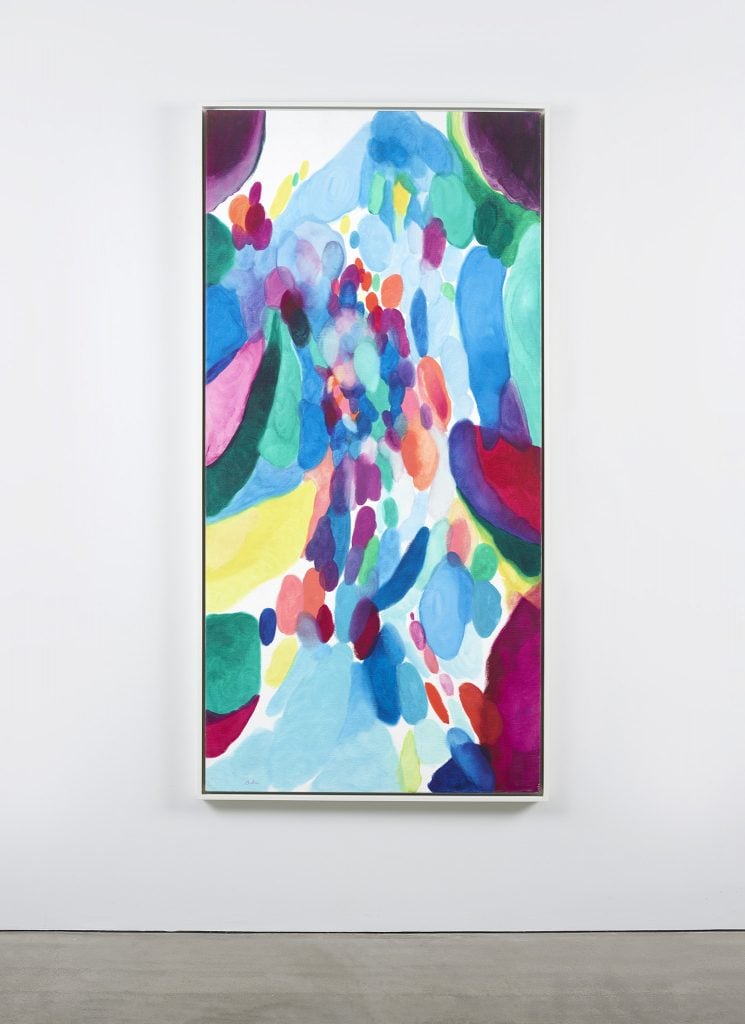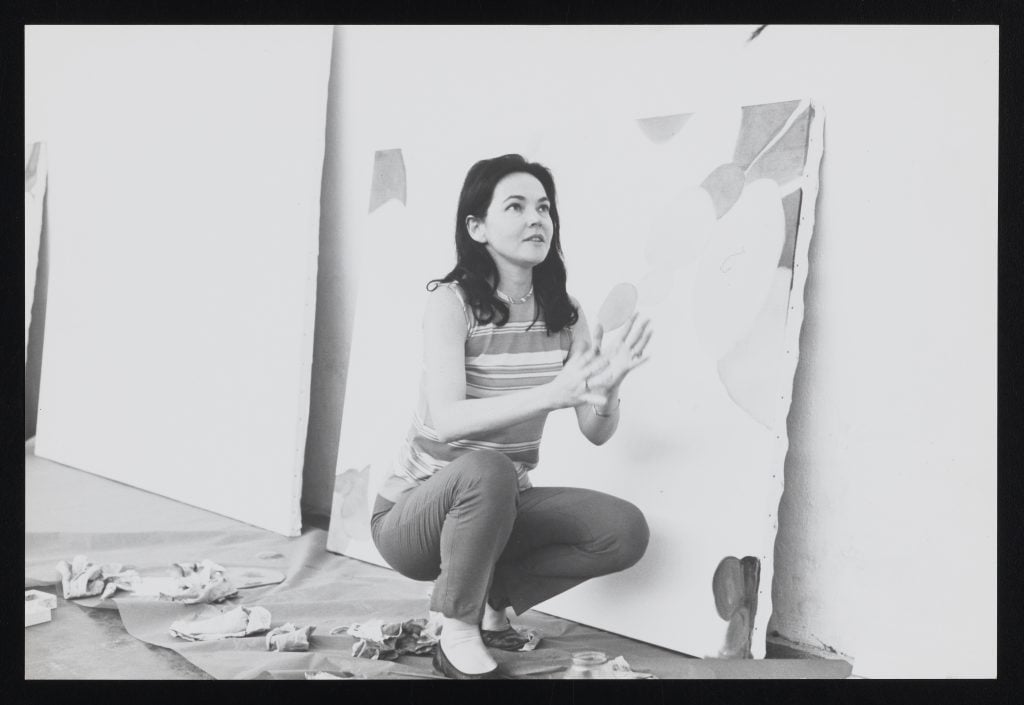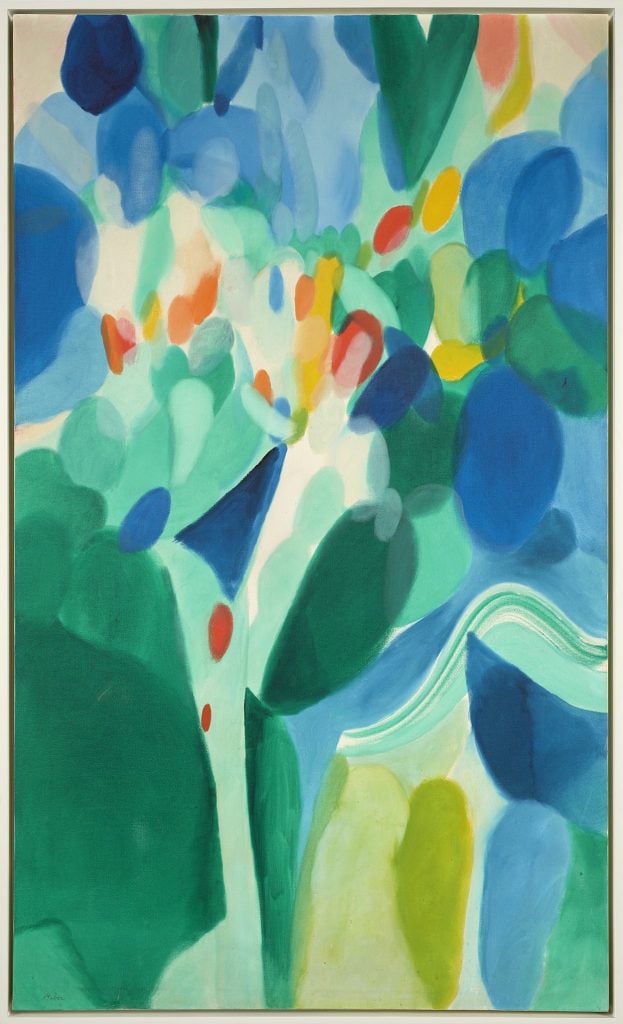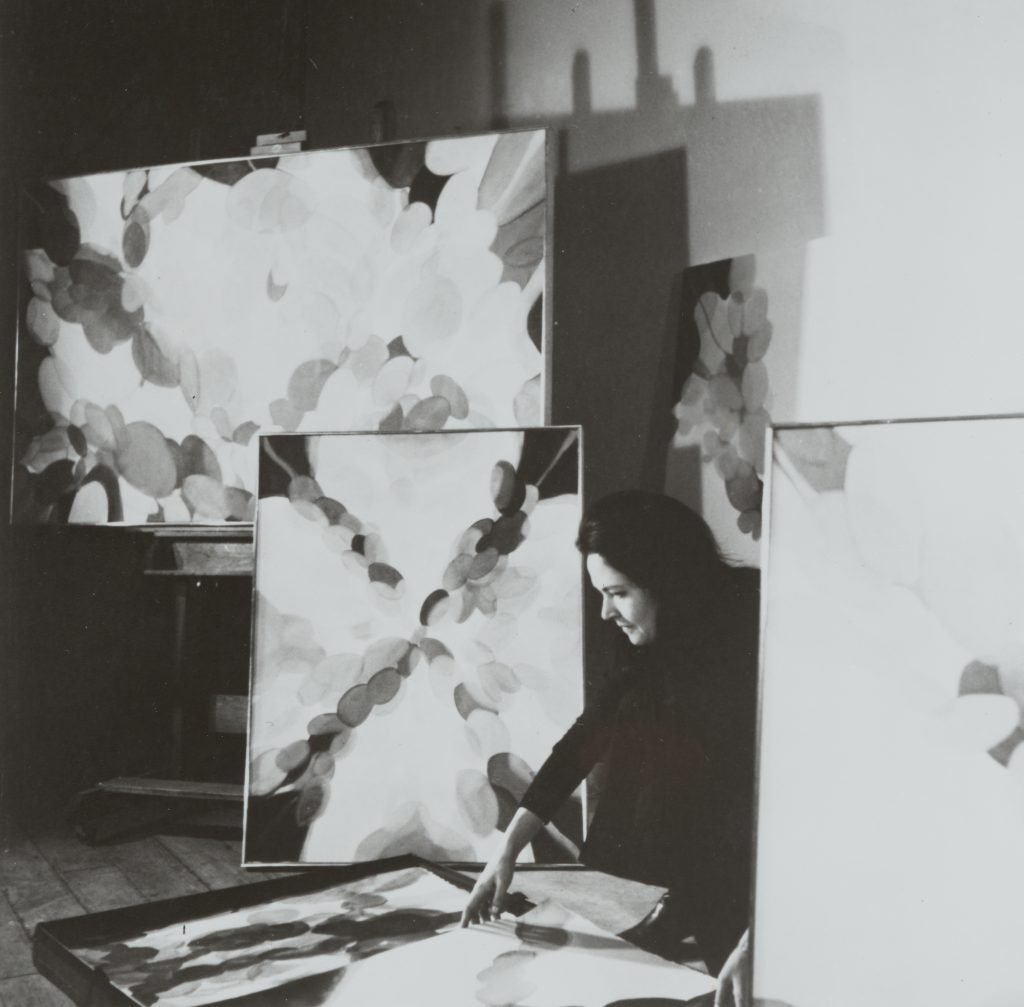
PRESS ARTICLE | Abstract Expressionist Alice Baber Advocated for Women Artists. At Long Last, Her Own Work Is Taking the Spotlight
May 3, 2024
Abstract Expressionist Alice Baber Advocated for Women Artists. At Long Last, Her Own Work Is Taking the Spotlight
"Reverse Infinity" at Berry Campbell in New York marks the first major exhibition of works by Alice Baber in over 40 years.
Alice Baber lived, by her own account, as an artist out of sync with her times, navigating the downtown New York art scene of the 1950s and ‘60s as both insider and outsider. Her life, as she described it, existed in the “slightly uncomfortable feeling of not belonging to any place.”
Moving to New York after college in 1951, the Illinois-born Baber garnered attention for her luminous, almost cosmic abstractions made in thin veils of color. She also emerged as an early and tireless advocate for women artists. Baber founded, along with artist Wilfrid Zogbaum and Elaine de Kooning, New York’s March Gallery, an artist cooperative on East 10th Street, where she made her New York solo debut in 1958. Critic Grace Glueck, in a review for the New York Times, would describe Baber’s works for the era as “Disks and puffs of pure bright color drift lyrically over a white field toward a gentle vortex.”
Her works would also find homes in museums; in New York, the Metropolitan Museum of Art, the Whitney Museum of American Art, the Museum of Modern Art, and the Solomon R. Guggenheim all have Babers in their collections. Still, Alice Baber’s legacy has been obscured in the decades since her death, an unknown name even as the art world has reappraised other women contemporaries.

Installation view of Alice Baber, Blue Flotilla, 1966. Estate of Alice Baber. Courtesy Berry Campbell, New York.
A new exhibition “Reverse Infinity” at New York’s Berry Campbell aims to change that (through May 18). The exhibition is the first large-scale showing of Baber’s work in over 40 years and features a remarkable ensemble of the artist’s luminous, auric abstractions made in thin veils of radiant color. The paintings on view span from 1960 to 1982—these last works are intimate, elegant watercolors made just months before Baber’s untimely death from cancer at the age of 54. The Embarcation (1960), the earliest work in the show, meanwhile, is a stain-like almost botanical vision of purples and blues imbued with hazy atmospheric quality. Early canvases give way to more mature works, such as Blue Flotilla and Time of Day, both from 1966, platelet-like discs of colors, in deeper, often jewel-toned hues. These works can seem biomorphic or even vegetal—like looking at a plant very close up.

On right: Portrait of Alice Baber, ca.1967. Estate of Alice Baber. Courtesy Berry Campbell, New York.
Gallerists Christine Berry and Martha Campbell have been on a decade-long journey with Baber’s work—the gallery devotes much of its programming to overlooked women artists of the last century. “We discovered Alice Baber while looking over archival gallery rosters from New York shows of that era,” said Berry during a recent phone call. “We started researching all the artists we didn’t know, mostly women.” Baber, Berry said, was an interesting case—an artist who had been well-known but had fallen into almost total oblivion. The discovery set the dealers off on an archival mission to reassemble her biography.
So Who Was Alice Baber?
Born in rural Illinois in 1928, she spent her childhood between Illinois and Miami, Florida, where the family wintered due to Baber’s chronic poor health. Her childhood memories of nature were vivid—“in color” as she described. While still a child she devoted herself to painting, and her family arranged for painting lessons from an early age. In 1946, Baber enrolled in Lindenwood College (now Lindenwood University), in St. Charles, Missouri, where she majored in art, studying under Elizabeth Watts. Watts cemented her interest in modern art and encouraged Baber to transfer to a larger arts program at the University of Indiana. She enrolled in 1948 and earned her B.A. and M.A. After graduating, she heeded the advice of another professor, the artist Alton Pickens, and moved to New York in 1951.
In the years that followed, Baber would split her time between New York and Paris and these cities would shape her style in unique ways. In New York, her works found resonance and inspiration from those around her, including the artist Paul Jenkins, whom she would be married to from 1964 to 1968, Sam Francis and Joan Mitchell were also formative to her style. In Paris, she was drawn to the artists of Art Informel.

On right: Alice Baber, The Green Reed (1966). ©Estate of Alice Baber. Image courtesy Berry Campbell Gallery.
While Baber is often contextualized as an Abstract Expressionist, “Reverse Infinity” opens her work to new interpretations. The exhibition is accompanied by a catalogue with a scholarly essay by curator Dan Cameron. Cameron makes a compelling case for seeing Baber through the lens of Orphism, a movement from the 1910s founded by Robert and Sonia Delaunay, which focused on the effects of light and color. Baber is known to have quoted Sonia Delaunay’s line “Colors are notes of a poetic language which expresses states of soul” in considering her own practice. Indeed, in person, Baber’s work seems much more about color and light in space than about the expressionist importance of individual gestures.
Baber once described her painting practice as a “way to get the light moving across the whole thing.” The cosmos, gravity, and buoyant weightlessness were certainly on the minds of the world amid the space race of the ‘50s and ‘60s and her works tend to convey a sense of floating. “An abstract painting is outer space, and I am in front of it, suspended” she explained, “so that there isn’t any horizon line. However, there is probably a sense of up and down and side to side.” In his essay, Cameron also notes the influences of her travels and her exposure to non-Western religions, both during her years married to Jenkins and after their marriage ended, as infusing her works. In the mid-1970s, Baber’s works were exhibited in both New Dehli and Tehran. She’d also traveled through Latin America on a tour organized by the United States Information Agency. In a 1978 exhibition at A.M. Sachs Gallery, where she had exhibited throughout the 1960s and ‘70s, Cameron notes that Baber debuted works inspired by her experience of a storm while visiting Machu Picchu. It was a transformative experience for Baber and as titles such as Sacred Space suggest hint toward spirituality.

On right: Alice Baber in her studio, 1972. Photo by Richard Galef.
But her life was as much about activism as it was about art. After her divorce from Jenkins was finalized in 1970, Baber fully committed herself to New York, forgoing long stays in Paris. During these years she organized exhibitions that supported women artists. She became, along with Alice Neel and Louise Nevelson, a trustee at New York City’s Women’s Interart Center, and collaborated on the exhibition Women Choose Women, held in January 1973 at the New York Cultural Center, which showcased the works of 100 women as selected by women. In a New York Times review of the exhibition artist Roslyn Drexler acknowledged Baber’s import, writing “Some of the women are already known to the public: Joan Mitchell, Alice Baber, Nell Blaine, Mary Frank.”
It seems that in the later years of her life, Baber was on the precipice of rightful and lasting recognition—but which never quite took shape. In 1982, just before her death, she received the first institutional survey of her paintings at the University of Alabama, Tuscaloosa, and with it, scholarly writings. Baber, whose illness had progressed quickly, worked until close to the end of her life, her works smaller and freer. Her final watercolors are filled with bright whiteness and butterfly-like notes of color, that seem to alight onto the canvas. So seemingly fresh, the paintings seem to have floated across the decades, to a time that might see them in a new way.
Back to News
